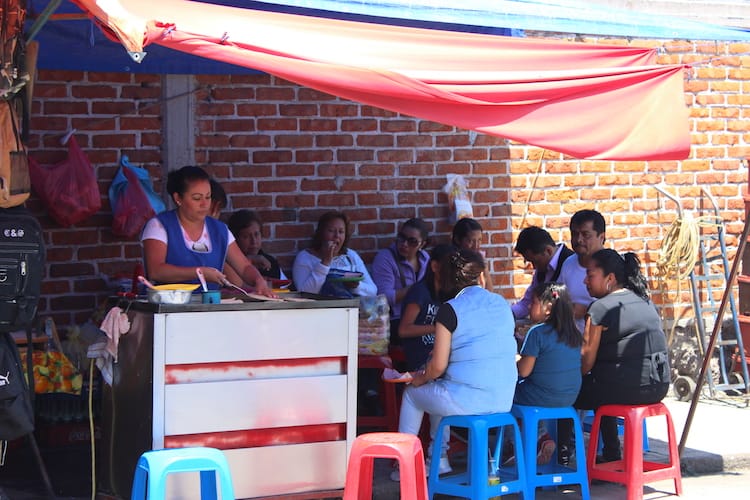Why Do Low-income Women Entrepreneurs Fail? New Research Provides Some Answers
At the beginning of 2018, the Failure Institute, along with Pro Mujer, published the results of one of the most relevant, meaningful – and difficult – studies we’ve ever done. The focus: failure among low-income women entrepreneurs.
Why study entrepreneurship from the perspective of failure – and why focus on women in particular? When talking about business and entrepreneurship, research and analysis often focus on success stories, underestimating the informational value that can be added by failed businesses, even though a new venture is more likely to fail than to succeed. In Mexico, for instance, 75 percent of businesses close after two years of operation. And when it comes to low-income business owners – especially female entrepreneurs in the developing world – we’ve encountered a persistent lack of research in general. So we decided to help fill this gap by studying the intersection of both topics.
In the process of conducting this research, we had the opportunity to visit Pro Mujer centers located in some of the most economically marginalized areas of the Metropolitan Valle de Mexico – a sprawling urban area that includes Mexico City. There, over the course of a year, we interviewed hundreds of women entrepreneurs who had experienced business failure. The results of this research are explored in the report “Low-income Female Entrepreneurs: Failure and Empowerment.” The study examines the experiences of more than 190 female entrepreneurs who have had at least one business that failed.
The research revealed four main causes of the failure experienced by female entrepreneurs:
The burden of household and childcare responsibilities
A lack of effective division of domestic labor – ie: the distribution of domestic tasks and family responsibilities among members of a household, including partners, children, or other people living in the same home – is the single largest contributor of entrepreneurial failure for women, playing a role in 49 percent of the failures we studied.
Unlike women in middle- or high-income households, the vast majority of low-income women are unable to pay for help with household chores and/or childcare. Since they must attend to these tasks themselves, the pressure on these female entrepreneurs’ time can be extreme, and their opportunities to do other activities (including income-generating) are extremely limited. In this way, the social organization of care reproduces and deepens inequality.
When a woman’s business interferes with her ability to care for her children and/or a sick family member, the expectation is that she will stop prioritizing it. The female entrepreneurs included in this study indicated that their first priority was their family and their domestic responsibilities, and then their businesses. The demands on their time as homemakers left many unable to sustain their enterprises.
The impact of relocation on entrepreneurs with limited networks
Geographic relocation is the second most important cause of failure among low- income women, playing a role in 30 percent of the failures we studied. Often, the success of low-income entrepreneurs rests on personal networks and trusted relationships within their communities. As such, relocation is particularly problematic for entrepreneurs with little connectivity to extended markets and client bases. The majority of companies we studied focused on direct sales, and when mapping the location of failed businesses, 45 percent of the total number of participants responded that their business was “itinerant,” with the women relocating from one area to another to reach neighbors, friends and acquaintances to whom they sold various products.
To illustrate the importance of location to these entrepreneurs, consider the catalog sales industry. Mexico is one of the largest markets for catalog sales, representing 4 percent of total revenue in the global direct sales industry and totaling more than $60 million Mexican pesos annually, according to the Mexican Association of Direct Sales (Asociación Mexicana de Ventas Directas – AMVD). And 75 percent of independent vendors are women (AMVD, 2017). The income they receive depends on the amount of product they sell and the commission offered by the distributor. But since catalog sales are almost entirely based on previously existing personal relationships, moving to a new neighborhood removes them from their existing networks, decreasing sales capacity and leading to failure.
A second factor that makes relocation a cause of failure is the uncertainty arising from renting for the 28 percent of businesses that do not own their space. Due to the informality of the majority of these businesses, women’s limited education, and the verbal nature of most leasing agreements, many women reported that issues with landlords, such as rising costs or displacement, required them to shutter their business.
Inability to manage credit extended to clients
The challenges of extending credit to customers contributed to 26 percent of the failures in the study. Again, since their sales depend significantly on personal contacts and networks, the women in the study commonly offer payments in installments as a purchase incentive. However, in most cases the companies that supply the products these women are selling do not offer the same structure, leaving the entrepreneurs with the burden of extending credit to their customers.
Credit is one of the primary obstacles to maintaining healthy cash flow, but the type of enterprises that are predominant in this sector tend to pay suppliers of their merchandise in weekly or bi-monthly installments. When a client defaults or delays payment, the entrepreneur must absorb the cost to remain in good standing with the supplier.
The economic profile of these female entrepreneurs limits their ability to manage the impact of cash flow misalignment. By absorbing the costs of partial payments or unpaid debts, these entrepreneurs not only reduce their profit margin but may eventually run out of capital to continue buying and distributing their products.

Finances and strategic planning
An analysis of the profiles of the marginalized female entrepreneurs that participated in the study showed that 71 percent had limited schooling. As a result, their business and management skills are generally learned from personal networks or based on trial and error – often leading to costly mistakes. This informality was particularly evident in issues of accounting, with only 27 percent of participants keeping formal accounting records for their business. Errors resulting from this skills deficit played a role in 20 percent of the business failures we studied.
If the use of formal accounting is limited, strategic planning is almost nonexistent. Without information on their expenses, operating costs, revenue and cash flow, low-income female entrepreneurs tend to spend money as circumstances demand and without a view toward the future. Additionally, because there is no separation between their personal and business finances, decisions are often made to address an immediate problem, emergency or unexpected event, even though these short-term solutions often cause long-term problems that ultimately lead to business failure.
The Resilience of Female Entrepreneurs
In spite of the above challenges, the high level of resilience and adaptability among these women entrepreneurs is a testament to their will and determination to keep moving forward. Although the failure of a business is a difficult process for a household economy, the women who experience these failures maintain their desire to continue contributing to the family income, improve their quality of life and meet the needs of the home and family – whether by working for someone else (54.11 percent), looking for a new business that suits their needs (19.86 percent) or getting training to improve their entrepreneurial skills (4.11 percent).
The Valle de Mexico is a megalopolis with unique social and economic characteristics, and failure analysis has shown us that the dynamics of business failure in each region of the world is different. Therefore, for us this is phase one of the process, with a long road ahead. At the Failure Institute, we will remain committed to using data from this and other studies to generate knowledge that will promote social justice and happiness for the planet’s inhabitants. And the findings of this report will allow Pro Mujer to build a stronger platform with improved offerings to meet the changing needs of these women. This research would not have been possible without Pro Mujer’s vision and commitment to creating opportunities for its clients and developing actionable knowledge.
By breaking down the taboos associated with failure, we can learn from the lessons of these experiences to design better tools, develop more appropriate skillsets, and implement tailored programs to strengthen women entrepreneurs in the developing world.
The information collected and the report itself can be accessed for free on our website.
Leticia Gasca is executive director at the Failure Institute.
All images courtesy of the Failure Institute.
- Categories
- Impact Assessment



